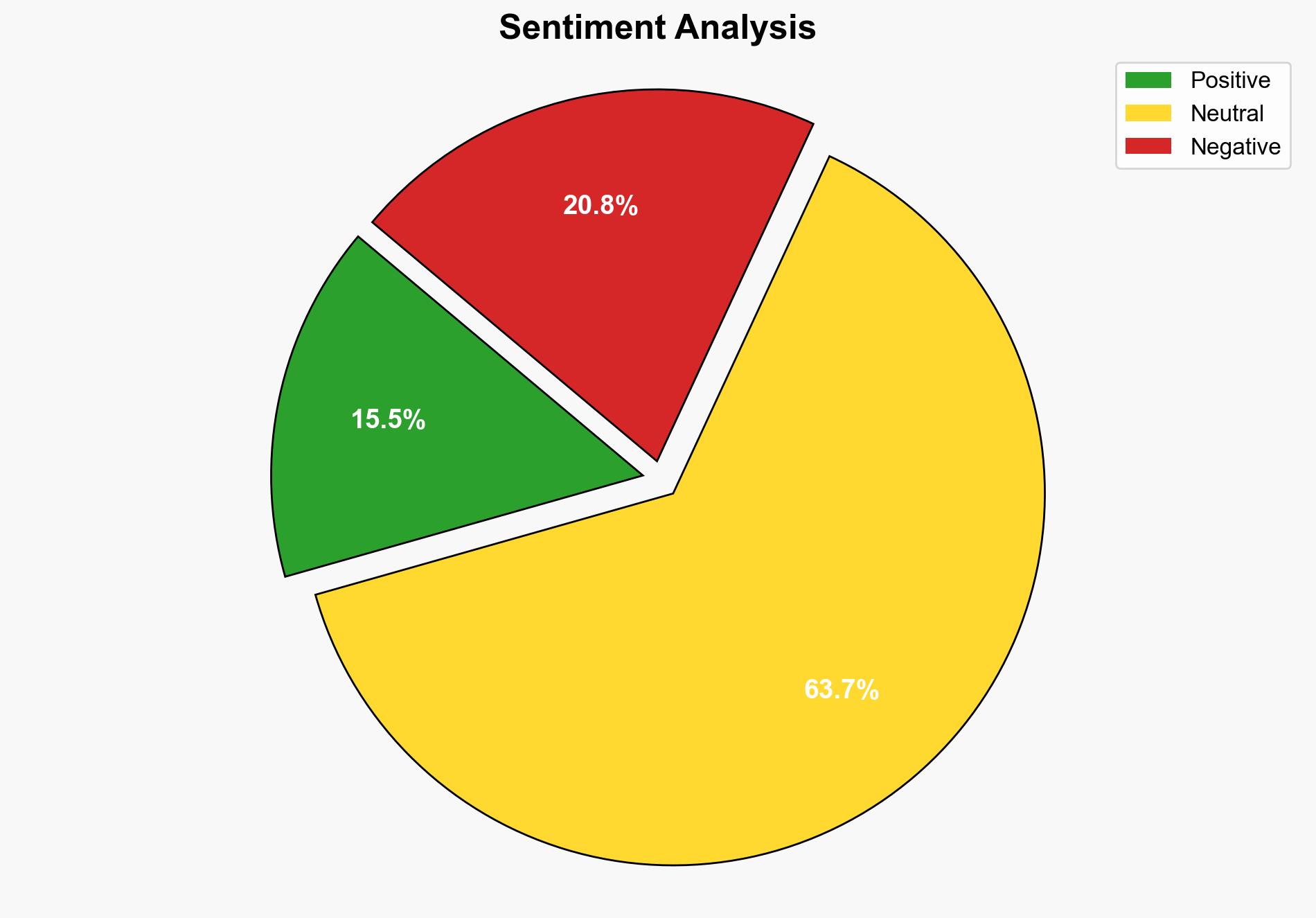Red vs Black – Yegor256.com
Published on: 2025-09-14
Intelligence Report: Red vs Black – Yegor256.com
1. BLUF (Bottom Line Up Front)
The analysis suggests that the “Red vs Black” framework is a metaphor for organizational dynamics, highlighting two distinct employee archetypes: those who conform to and thrive within corporate structures (Red) and those who resist and operate on the fringes (Black). The most supported hypothesis is that this framework is a critique of organizational culture and its impact on employee behavior and productivity. Confidence Level: Moderate. Recommended action is to explore organizational policies that balance structure with flexibility to enhance employee satisfaction and productivity.
2. Competing Hypotheses
1. **Hypothesis 1**: The “Red vs Black” framework is a metaphorical critique of corporate culture, emphasizing the dichotomy between conformity and resistance within organizations. This hypothesis suggests that the narrative is a reflection on how organizational structures influence employee behavior and career progression.
2. **Hypothesis 2**: The framework is a literal comparison to Soviet-era prisoner camps, suggesting a more cynical view of corporate environments as oppressive systems that stifle individuality and creativity. This hypothesis implies that the narrative is a direct criticism of the corporate world as inherently repressive.
Using the Analysis of Competing Hypotheses (ACH) method, Hypothesis 1 is better supported due to the metaphorical language and context provided in the source, which aligns more closely with organizational dynamics rather than literal historical comparisons.
3. Key Assumptions and Red Flags
– **Assumptions**: It is assumed that the “Red vs Black” framework is intended as a metaphor rather than a literal comparison. It is also assumed that the narrative is reflective of broader organizational trends rather than isolated incidents.
– **Red Flags**: The lack of specific examples or data to support the claims made in the narrative could indicate a potential bias or exaggeration. The use of emotionally charged language may also suggest an underlying agenda.
– **Blind Spots**: The analysis may overlook alternative interpretations of the framework, such as its application to different cultural or organizational contexts.
4. Implications and Strategic Risks
The narrative highlights potential risks associated with rigid organizational structures, including decreased employee morale, reduced innovation, and increased turnover. These risks could lead to long-term strategic disadvantages in competitive markets. Additionally, the narrative suggests a potential for internal conflict and division within organizations, which could impact overall effectiveness and cohesion.
5. Recommendations and Outlook
- Organizations should consider implementing policies that encourage flexibility and creativity, allowing employees to operate outside traditional structures when beneficial.
- Conduct regular assessments of organizational culture to identify areas of improvement and address potential sources of employee dissatisfaction.
- Scenario-based projections:
– **Best Case**: Organizations successfully integrate flexible policies, leading to increased innovation and employee satisfaction.
– **Worst Case**: Rigid structures remain, resulting in high turnover and decreased competitiveness.
– **Most Likely**: Gradual adoption of flexible policies, with mixed results depending on organizational context.
6. Key Individuals and Entities
The source does not mention specific individuals by name, focusing instead on generalized employee archetypes within organizations.
7. Thematic Tags
organizational culture, employee behavior, corporate dynamics, workplace innovation





